The IASSC, Villanova, and ASQ Six Sigma Black Belt exams all require knowledge of the Founding Fathers of Six Sigma and the Quality Movement. These should be easy points that you pick up. What follows is a great Six Sigma history study guide for you to take with you to the test.
Six Sigma was originally developed by Motorola – first by Bill Smith, then by Mikel Harry as a general approach to measuring quality in business performance terms.
Over the years, especially in the 1990s, continuous improvement tools and methods were developed by Deming, Juran, Shewhart, Ishikawa, Shingo, and Taguchi.
Now it has evolved to be a project-driven approach to process improvement that follows the five-step process known as the DMAIC cycle. The world’s best companies have used this process to save and make billions of dollars.
History of Organizational Improvement and the Foundations of Six Sigma
I would suggest studying this Sigma Six history study guide last after you’ve mastered the rest of the test. At least, it was easier for me to understand the impact of these historical figures after I already knew (and had used) the techniques they had invented. This is a studying technique known as anchoring – fixing new knowledge into your memory by ‘anchoring’ it to existing knowledge.
I’ve added links to the techniques that these men invented. If you are not familiar with them, study those, too!
Walter A Shewhart

- Shewhart’s complete write-up.
- ‘Father’ of Statistical Quality Control – used statistics to make material improvements in processes.
- Invented Plan-Do-Study-Act as a design approach
- Theory about statistical control methods
- Reduce variation to improve quality
- Special variation vs. Common cause variation
- Invented control charts
Joseph Juran
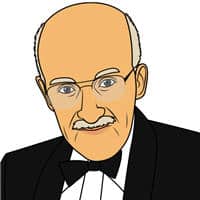
- Juran’s complete write-up.
- Six Sigma/quality projects must be “breakthrough” in nature.
- Believed that anyone is a customer of a product or service if that person is affected by it.
- Juran’s Quality Trilogy.
- Quality Planning
- Quality Control
- Quality Improvements
- Quality cost measurement
- Pareto analysis
- Managing for Quality theory
- “It is most important that top management be quality-minded. In the absence of sincere manifestation of interest at the top, little will happen below.”
W. Edwards Deming
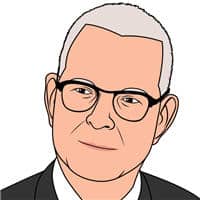
- Deming’s complete write-up.
- Studied under Shewhart.
- Taught Statistical Methods during WWII
- Famous in Japan
- Brought the Plan-Do-Study-Act cycle into widespread usage.
- Maintained that senior management involvement was critical to a quality movement.
- 7 Deadly diseases of management.
- 14 Obligations of Top Management
- Concentrated on improving the system.
- Chain Reaction of Quality:
- “Improve Quality, Decrease Costs, Improve Productivity, Capture the market with better Quality and price, Stay in business, and Provide Jobs”
- Constancy of purpose.
Kaoru Ishikawa
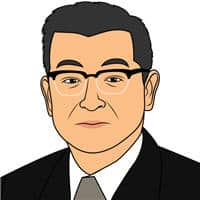
- Ishikawa’s complete write up.
- Father of Japanese Quality
- Fishbone diagram (aka 4M/5M or cause and effect diagram)
- Invented CWQC – Company Wide Quality Control
- Sponsored the concept of “next operation (process step) as the client” to avoid workplace politics.
- TQM– Fiegenbaum and Ishikawa (1980s)
Genichi Taguchi
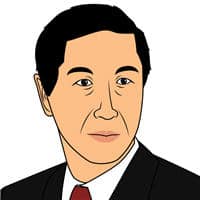
- Taguchi’s write-up.
- Taguchi Loss Function
- Quality is related to the financial loss to society caused by a product during its life cycle.
- Taguchi Robust Design
- Developed a product quality system that introduced quality in the conceptual phase, brought it through the design phase, and eventually into manufacturing operations.
Philip B. Crosby
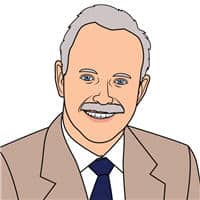
- 14 Step approach to Quality Improvements
- 4 Absolutes of Quality Management
- Quality is conformance to requirements.
- Quality comes from prevention.
- Quality performance standard is zero defects.
- Quality measurement is the price of non-conformance.
- Created quality cost measurements
Armand V. Feigenbaum

- Stated that a quality professional has an opportunity to become a true businessman.
- Advocated for top management involvement in quality initiatives.
- Established the concept of Total Quality Control & Management (TQM) – Fiegenbaum and Ishikawa (1980s)
Motorola’s Bill Smith, Mikel Harry, and Robert W. Galvin

- Bill Smith
- First introduced the term Six Sigma
- Convinced Motorola CEO Robert W Galvin to adopt Six Sigma
- Mikel Harry
- Considered the main architect of Six Sigma
- Along with Bill Smith, developed MAIC that evolved into DMAIC
- Robert Galvin
- CEO of Motorola
- The 1st CEO to understand the need to control variation


Comments (8)
The character posting for Crosby is actually Harry.
Crosby had 12 points, which is why Deming decided on 14; thirteen not being a good number.
Incorrect.
1. Management commitment
2. Quality improvement team
3. Quality measurement
4. Cost of quality evaluation
5. Quality awareness
6. Corrective action
7. Establish an ad-hoc committee for the Zero Defects Programme
8. Supervisor training
9. Zero Defects Day
10. Goal setting
11. Error cause removal
12. Recognition
13. Quality Councils
14. Do it over again
Great article. But you made a mistake by mixing the picture of Mikel Harry and Philip B Crosby.
Thanks, SW. We absolutely had the wrong names on the wrong images. Corrected!
some IASSC practice tests mention Jack Welch of GE
Jack was certainly an influential figure in the history of Six Sigma, but was by no means a founding father. Motorola and Toyota had long prior implemented what we know as Lean Six Sigma. As a CEO of one of the world’s most impressive companies Jack Welch leveraged Six Sigma on a grand scale for great results and by doing so Six Sigma gained the attention of more leaders around the world that would have been the case without.
Jack’s autobiography, Straight from the Gut tells more about this story. It’s a fascinating read.
The second video under History of Organizational Improvement and the Foundations of Six Sigma Videos is no longer available. Could you please update this?
Looks like both videos were removed from YouTube. I deleted them from this page.
Starting to look like I should record my own videos for upload!